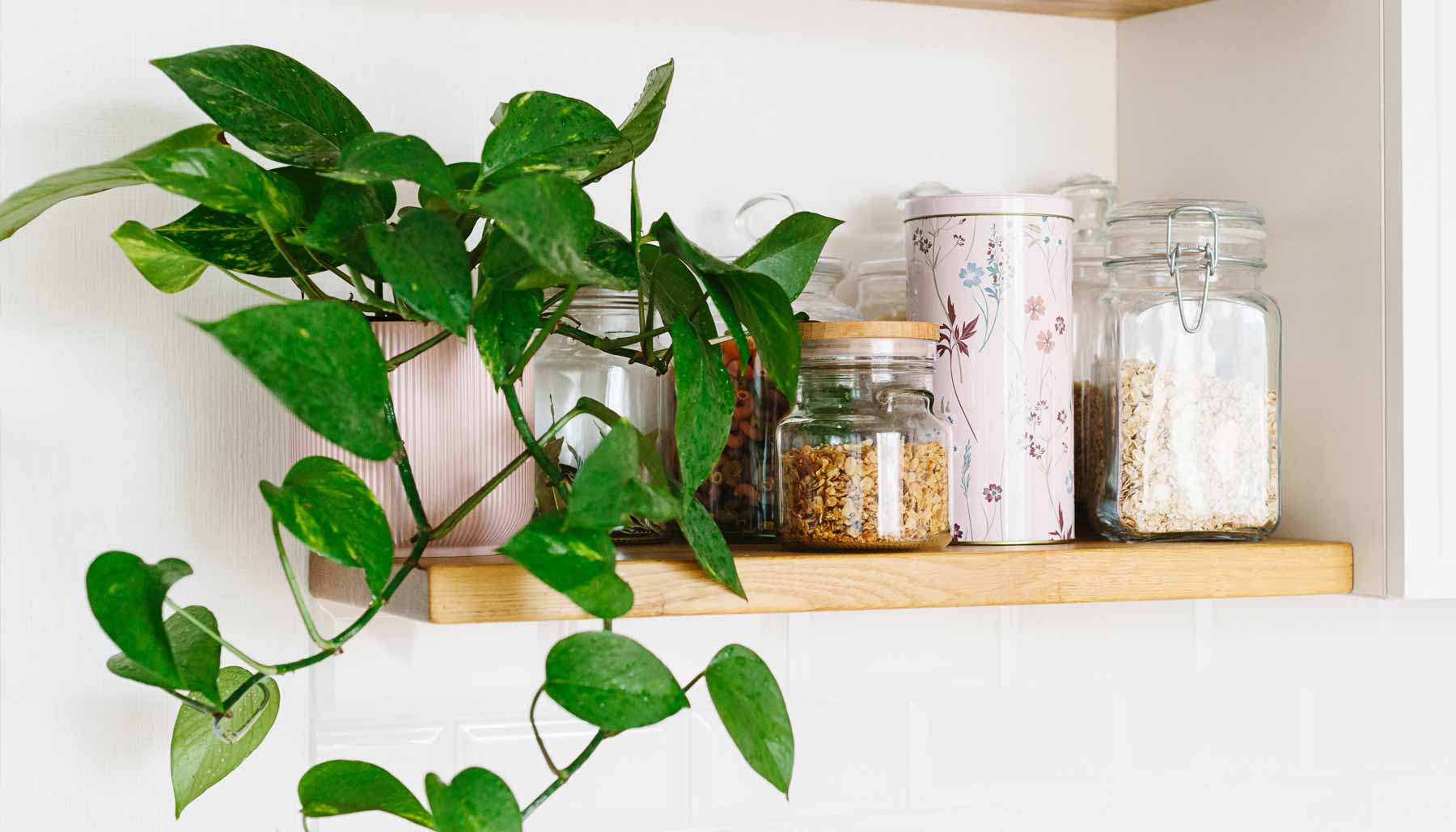Houseplants are having a moment right now. After all, they make a home feel inviting, interesting, and lively. I mean, they quite literally breathe life into our spaces.
Who wouldn’t want to have an entire houseplant jungle? I’ll take one of these, two of those… Oh, and let me get that one, too.
Unfortunately, not all of us were blessed with a green thumb, or time to devote to plant care. But don’t let those fickly fiddle leaf figs fool you — not every houseplant requires gardening expertise and extensive care.
Let’s take a look at some seriously easy peasy houseplants. These hardy indoor plants can survive — and even thrive — on neglect.
Related: 8 Ways to Keep Your Plant Babies Thriving This Winter
Pothos
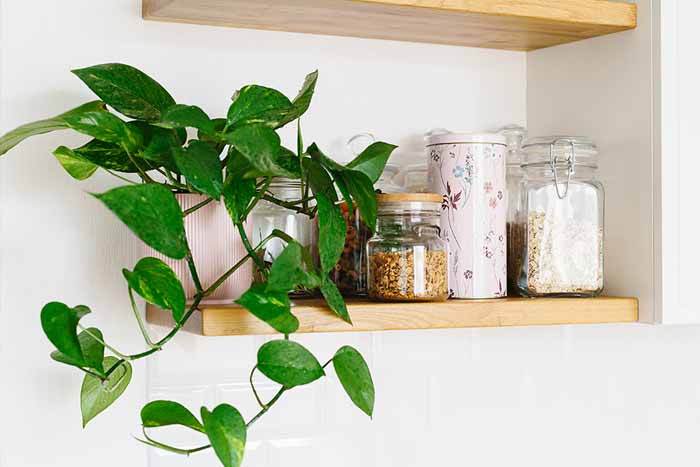
Pothos, aka devil’s ivy, is one of the most popular houseplants in the country. I’m in a lot of houseplant groups on social media, and nothing pops up more than pothos.
This plant’s popularity is a combination between looking great and being easy peasy. It’s fast growing, and while it prefers bright, indirect light, it’ll also tolerate darker conditions, too.
Red Aglaonema
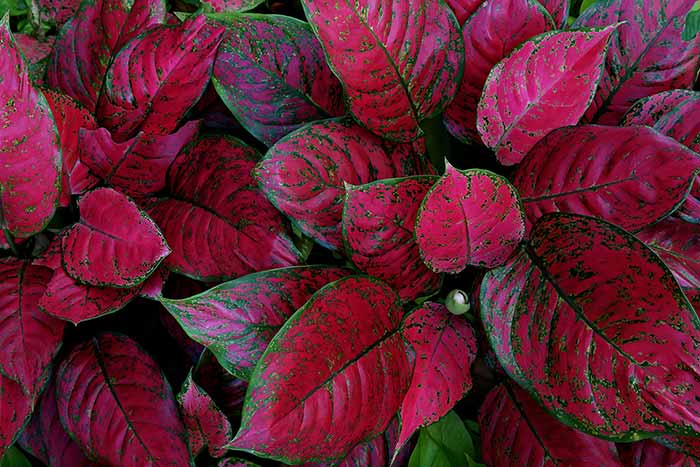
A lot of easy-to-care-for houseplants are simply shades of green, but not this one. With dark green leaves that are flushed with bright red or pink, this plant’s colorful foliage will bring a fun pop of color into your space.
Don’t let its beauty fool you, though: it is as tough as it is pretty. It’ll keep looking good without much fuss, and will thrive with low light.
Spider Plant

Spider plants are great for first-time plant parents. They are one of the most adaptable and easiest to grow house plants out there, and they look really cool. They will withstand different ranges of light and don’t need a super strict watering schedule.
Plus, this is like the plant that keeps giving. As they mature, they send out stems that produce little “babies” that you can re-pot easily — so I hope you’ve got a lot of pots ready, and friends to share with!
Parlor Palm
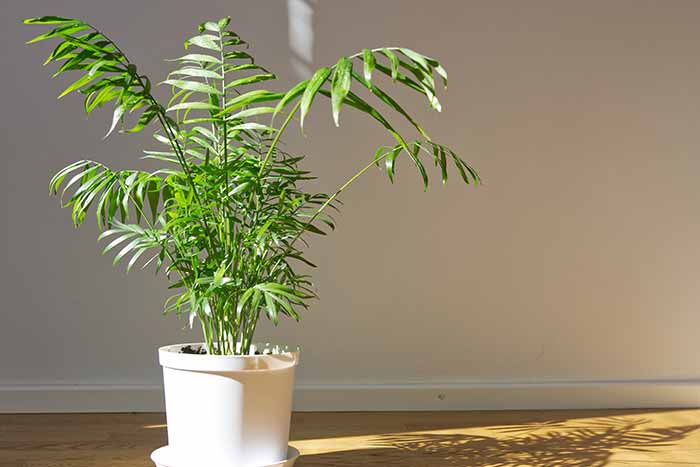
The parlor palm has been a prized houseplant since Victorian times, and for good reason: it is super easy-going. It’s adapted to relatively low light and can handle a variety of temperatures inside the house. Oh, and it’s non-toxic to pets.
Lucky Bamboo
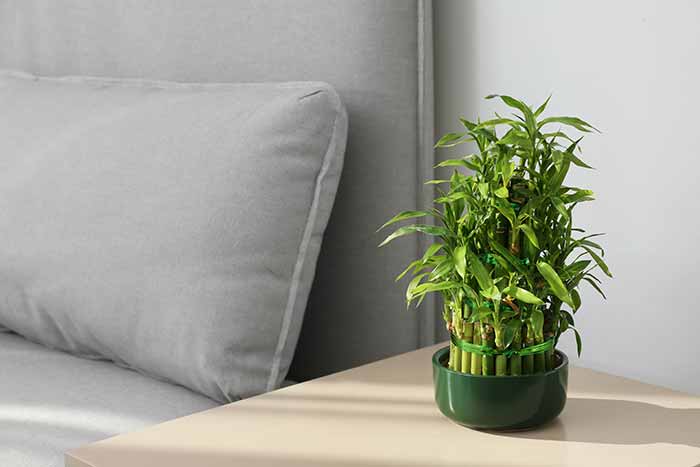
Fun fact: the houseplant known as “lucky bamboo” isn’t actually bamboo! This plant resembles bamboo, but it’s actually dracaena. No matter the name, this houseplant is nearly impossible to kill. Trust me, here. I’ve been ignoring some at my house for like 10 years now.
You’ll often find it with stems trained to bend or spiral in cool shapes. Lucky bamboo is said to increase feng shui, and there are different meanings associated with arrangements according to Chinese traditions.
Snake Plant
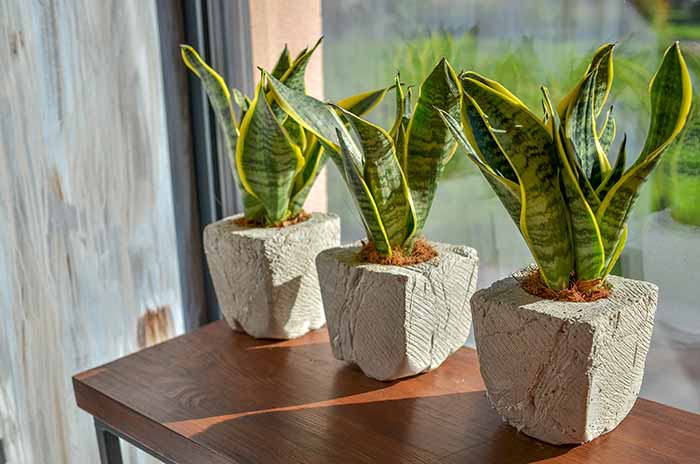
This one’s a true classic. Also known as Sansevieria or mother-in-law’s tongue, it thrives on neglect and low light. I mean, you could basically forget to water it for a month — making it a good choice for frequent travelers and forgetful people alike.
It’s worth noting that NASA research has shown snake plants are able to remove toxins and keep the air inside your house clean. Plus, the tall, vertical leaves will add some serious interest to your indoor space without adding a ton of extra work.
English Ivy
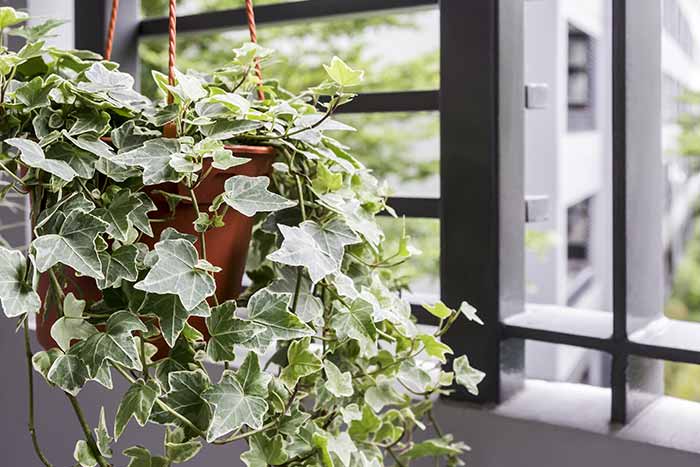
Although this vigorous vine can be pretty invasive outdoors, it makes a very lovely houseplant that’s easy to care for. Basically, this stuff is impossible to kill. Throw it in a hanging basket, and watch them cascade over the sides beautifully. They’re super easy to propagate from stem cuttings, too, so you can have as many as you want!
Succulents

Many houseplants get sad and yellow when they’re neglected, but succulents are different. They want you to neglect them. They beg for it. Keep ’em warm and dry in a sunny spot, and they’re as happy as can be. Succulents come in an infinite selection of shapes, sizes, and colors, so go nuts!
Aloe

Aloe is a succulent, but I feel like it deserves its own spot on the houseplant list. They’re spiky and interesting, plus they’re useful — you can use the sap as a skin moisturizer, or to treat cuts and burns.
Like other succulents, they just want some bright, indirect sunlight and a lot of neglect. I currently have one that’s 2 feet tall, and it got that big with some good ol’ sunlight and neglect. I can’t even tell you the last time I watered it.


